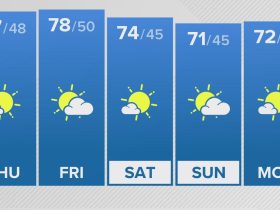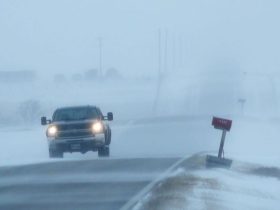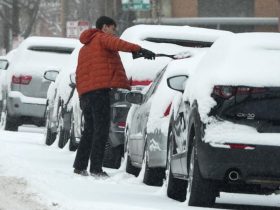WPBN: As a result of the coldest beginning to the month of December in the United States in more than a decade, many people are wondering whether the wintry conditions will continue through the holiday season and create a winter wonderland that is picture-perfect.
From a general standpoint, however, if you have not yet experienced snow, it is quite unlikely that you will do so before the holiday season.
The forecast is looking very tricky with at least one, if not more, pattern alterations before the end of December. This is due to the fact that there are only about two weeks left until the coming of holidays such as Christmas, Hanukkah, and Kwanzaa.
There is a continuing prediction from climate models that December will end up being warmer than usual generally.
This means that the heating system will be turned on during the second half of the month in order to compensate for the snowfall surpluses and temperature deficits that have accrued over the first few days of the month.
The majority of computer models, including the European Centre for Medium-Range Weather Forecasts (ECMWF) and the Global Forecast System (GFS), indicate that the heat will begin to arrive in earnest throughout the following weekend, with temperatures reaching 5-15 degrees above the average.
Despite the fact that the mild temperatures will cause extensive snowmelt and remove some of the holiday crispness from the air, there are still uncertainties regarding the length of time that the mercury will linger at levels similar to those seen in October.
Is it possible that the warm-up will continue into the week of December 23, or will a sharp frontal boundary force temperatures to drop to levels that are typical for the season?
When compared to only one week ago, forecasters have a higher level of confidence in the forecast. The level of confidence among NOAA forecasters has improved from approximately forty percent to sixty percent; nevertheless, there is still a significant amount of work to be done in order to determine whether or not there will be any precipitation to track and when wintry weather will return.
5.5 Magnitude Earthquake Hits Nevada, Felt Strongly in Northern California
What does the initial examination of the holiday forecast reveal?
The ENSO’s neutral or La Niña status, the absence of polar vortex disruption, the lack of extensive snow cover, and the overall shifting climate patterns all suggest that Christmas will not deviate significantly from the norm.
There are still no obvious indications that cities that don’t usually get a white Christmas will this year; instead, the cities that typically suffer frozen precipitation still have the best chance.
For example, 2009 was the last snowy Christmas in New York City, setting a record for the snowiest holiday season in modern times that is unlikely to be surpassed in 2024.
Unlike more southern locations like Charlotte or Atlanta, residents in Minneapolis or even Buffalo, which annually have the best possibilities of snow, will probably be better equipped to witness frozen precipitation.
Those who want to spend the holidays in shorts might choose to travel to Florida or the Southwest, where temperatures are unlikely to drop below record lows. In the Southwest, there’s even a chance that temperatures will rise above average on December 25 instead of falling below normal. In fact, temperatures are currently expected to be above average in the western half of the country.
Great Lakes Set for Another Round of Lake-Effect Snow in Less Than Two Weeks
Another Christmas Day snow cover that is far below average?
Slightly more than 25% of the nation experiences snowfall on average during the Christmas season, but whether or not temperatures are cold enough to support frozen precipitation relies on the broader trends, which have been erratic over the past few years.
As demonstrated in 2009, when an estimated 63% of the country was covered by snowfall, only 17% of 2023 received measurable snowfall, making it one of the barest holidays on record. Occasionally, the country is fortunate enough to experience a winter wonderland when moisture and frigid air combine.
The country as a whole will probably go through a number of ups and downs before the holidays arrive, so it is unrealistic to expect December to maintain what the first few weeks have already established. Air mass patterns usually endure from a few days to a few weeks.












Leave a Reply